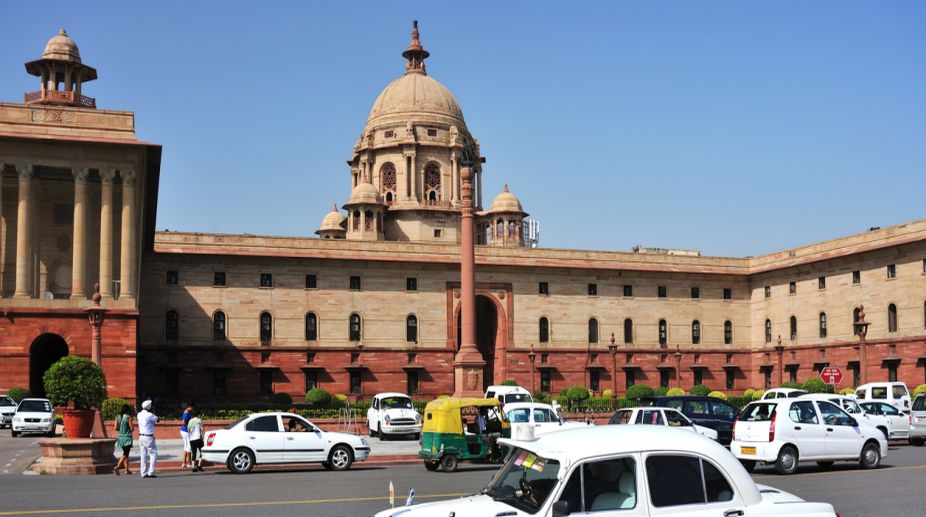The second Administrative Reforms Commission (ARC II) reinforced the logic of increasing professionalization of the Civil Service.
It suggested the specialization can be achieved through providing channels of (a) lateral entry; (b) liberal revolving-door policy; and (c) creation of a Senior Executive Service (SES) to which positions can be filled by applying the criterion of merit at higher levels and not just the entry level.
Advertisement
It recommended the setting up of a Central Civil Services Authority which would formulate guidelines for appointments at the senior management level in the Government. It would also identify posts which could be open for recruitment from all sources.
For positions at a higher level, the Central Public Service Authority should, in consultation with the Government, earmark positions for which outside talent would be desirable.
The Sixth Central Pay Commission recommended that certain posts in the Senior Administrative Grade and Higher Administrative Grade requiring technical or specialized expertise and not en-cadred in any of the services be filled by suitable officers within the Government as well as by outsiders on contract.
It suggested a shift from careerbased to post-based selection in the higher echelons of the Government in order to get the best domain-based expertise.
In 1977, in an effort to break the IAS stranglehold, Prime Minister Morarji Desai inducted professionals such as MS Swaminathan as Agriculture Secretary, Lovraj Kumar the first chemist to serve as Petroleum Secretary, Manuel Menezes an engineer was appointed as Secretary for Defence Production.
On returning to power in 1980, Indira Gandhi set up a new Department of Environment, for which a reputed botanist T.N. Khooshoo was hired as its Secretary. Gradually the IAS fought back and reclaimed possession of the ministries it had lost control of.
In recent years, the IAS has not only protected its turf; it has steadily conquered new fiefdoms, expanded into new areas. It now virtually dominates even the Constitutional institutions, notably the Election Commission and the Information Commission.
Both are run by retired IAS officers. So also CAG and CVC. Then there are a range of other avenues ~ an array of commissions for human rights, for finance, SC and ST, governors and ambassadors, et al.
Public spirited and well-endowed professionals, social scientists, or serving Group ‘A’ Central Services officers are not allowed to be considered. The IAS has over time acquired a new trait ~ bureaucratic imperialism.
It has intruded into spheres that once legitimately belonged to the technocrats, educationists and other groups ( Jagmohan). Further, a large number of excadre posts have been created, a senior officer’s normal charge has been split up into three or four same level positions with nominal workload.
A number of insignificant posts have been arbitrarily upgraded to provide high level berths. The IAS began to encroach upon the legitimate premises of the specialized and technical services. Contrary to general belief, liberalisation has expanded the power of the bureaucracy, creating a permanent establishment that never retires.
Serving or retired bureaucrats have spread their tentacles over virtually every important decision-making institution. No less than nine among the twelve economic regulators that came into being since liberalisation owe their roots to the privileged coterie.
No wonder that bureaucrats spend the last few years of their service career kowtowing for post-retirement lollies. This has had a debilitating effect on the civil service. The IAS dominates over the country’s entire administrative domain.
As the Chairman, Pay Commission-VII said, it has arrogated “to itself all power of governance”, relegating “all other services to secondary position”. The modus operandi is simple: like Humphreys of Yes Minister, astute members of the IAS control every commission or committee, “processes” all reform proposals with a vicious grip over the political masters.
As Jim Hacker rued in Yes Minister, the permanent officials force decisions the way magicians force cards on their audience in the three-card trick: ‘Choose any card, choose my card’. Many among Cabinet Secretaries, Chief Secretaries and those in the PMO facilitate the process.
When Mr Kapur dismisses a corporate executive as merely “manipulating the market”, with “no experience in executive decision-making”, he ought to acknowledge that, while in business administration, individual self-interest is checked and diluted by the fear of loss of sales and declining profit, bureaucratic behaviour is primarily determined by consideration of power, prestige, money, security, and convenience.
Max Weber, the bureaucrat’s favourite philosopher, once remarked that the bureaucrat was a kleber, using the German word for ‘sticky’, meaning the bureaucrat will stick to his chair, refusing to take bold decisions.
As Lord Bridges of the UK maintained, civil servants personify timidity and pusillanimity, indifference and apathy, perpetuating elitism among the highest echelons. The former Cabinet Secretary, TSR Subramanian recalls what UP’s Chief Minister Mulayam Singh Yadav said at a state level IAS officers’ conclave in 1990 ~ “Why do you come and touch my feet? Why do you come and lick my shoes? Why do you come to me for personal favours? When you do so, I will do as you desire and then extract my price from you.”
While reviewing Arun Shourie’s book, Governance and the Sclerosis That Has Set In, Edward Luce mentions how Franz Kafka would have had difficulty dreaming up some of the examples cited in the book.
It piles example upon example of bureaucratic tragicomedy on the reader, how a hostile bureaucracy won the day through obfuscation, missing files, and wonderfully baroque delaying tactics. “This way of doing things ~ a mindless, endless shuffling in slow motion ~ is not a device, it is more than a habit.
It has become nature”. Imagine how narcissistic Mr Kapur and his ilk appear with the claim that the IAS provides for “not merely good governance but the best”.
It would be pertinent to remind them of the testimonial that Prime Minister Rajiv Gandhi had once advanced by way of a scathing indictment ~ “We have government servants who do not serve but oppress the poor and the helpless, who do not uphold the law but connive with those who cheat the state and the whole legions whose only concern is their private welfare at the cost of the society.
They have only a grasping mercenary outlook, devoid of competence, integrity and commitment.” They may well heed the sobering thoughts of Mr Ashok Mitra, ICS ~ “Knowledge has become more complex and specialized, which an IAS finds it hard to keep up with as he gets tossed about as a generalist from one field to another.
His stock of reasoned and systematic knowledge, acquired in his university days, lasts him, unless periodically replenished, for the first dozen years or so of his service life.
By the time he is in need of more he is reduced to such a rubberneck, hopping from one generalist job to another that he is denied the opportunity and leisure of acquiring more of it.
Thus an IAS runs the danger of lapsing into illiteracy so far as theoretical sophistication for policy making in concerned. The best of the IAS begin by being as good if not better, material than the best of the ICS, and that it is the system that rusts them so quickly.
Rule of thumb mumbo-jumbo is bound to be anti-intellectual.
(Concluded)
(The writer is Senior Fellow Asian Institute of Transport Development, and former CMD, Container Corporation of India)











